Welcome to Twine, a showcase of creative strands, threads, loose ends and much, much more by our Twisted Rope team around the world. Follow a strand to begin exploring.
Don't wanna be here? Send us removal request.
Text
What a burrito shop can teach us about UX

By John Messersmith Developer / UX Designer, Twisted Rope
I noticed a clever example of error prevention the other day at my local burrito shop.
Like many fast food places, the customers are expected to throw out their garbage themselves when they’re done eating. Unlike most places, this shop serves its food in little plastic baskets.
The restaurant doesn’t want customers throwing these baskets into the garbage receptacle when they’re cleaning up. So, how do they help customers avoid throwing away the baskets with the garbage?
They do so by providing a garbage receptacle with an opening just big enough for paper cups and wrappers to fit through but too small for a basket.
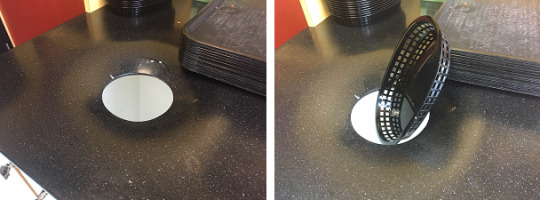
LIMITING OPTIONS: A burrito shop stops customers from throwing away baskets by only making the opening large enough for standard waste.
Let’s contrast that with another local eatery with a similar desire to keep its food baskets out of the garbage.
Its solution is to provide the usual wide-door garbage receptacle but, in this case, with a sign next to a bus bin reading, “Please place black plastic sandwich baskets in here!” And in all caps, by the way.
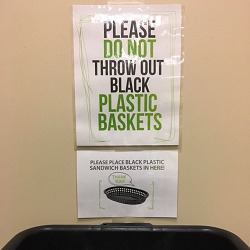
ASKING NICELY: Another eatery kindly asks customers to not throw baskets in the trash and, instead, place them in the bin above the receptacle.
Which restaurant do you think spends more time combing through the garbage to retrieve their baskets?
The burrito shop’s solution is a good illustration of how to guide users through a task -- making things easier for them (and, just as important, the restaurant) by limiting their options.
Now consider the following example from the world of User Interface Design.
Our Email Direct Marketing team at Twisted Rope uses a variety of platforms, based on client requirements and licensing, to test and execute email marketing campaigns. The interface of one particular platform we use on behalf of a client has, what we consider, a UI design flaw. In the part of the plaform used to schedule emails to send at a specific time, the user is asked to place the date and time of the execution into a text box and it must be formatted in a specific way.
Take a look at the following two examples from the interface in question:

NO CLEAR INSTRUCTIONS: A platform used by the Twisted Rope Email Direct Marketing team is vague in how users can enter information. Straying from what that platform needs, however, results in errors that aren't clear to users at the outset.
One of the above examples is formatted incorrectly. Can you tell which one?
Early on, when our Email Direct Marketing team was still learning this platform, the date and time were entered in a format similar to the second example above – without a space between the time and ‘PM.’
The execution failed.
That is, we didn’t know there was a mistake until we arrived in the office the next morning to discover the campaign did not execute overnight. To make matters worse, it was not immediately clear why the campaign failed. It required a substantial amount of time investigating the matter to discover the reason.
There are a lot of things wrong here. Just to name two, there is no clear message as to why the campaign failed and there is no format validation or error handling at the point of scheduling the execution.
However, by far, an easier and, frankly, more elegant solution would be a different type of form input for this data.
As the Nielsen Norman Group puts it:
Even better than good error messages is a careful design which prevents a problem from occurring in the first place. Either eliminate error-prone conditions or check for them and present users with a confirmation option before they commit to the action.
A simple alternative in this “error-prone condition” would be to provide the user with drop-down menus -- one each for hour, minute and a.m./p.m. data inputs.
We’re left guessing as to why the platform uses a text-box input. It could be that the system designers wanted to allow for open-ended, granular scheduling. That is, a drop-down list has its limitations. To provide for scheduling executions at the minute level (e.g., 4:33 PM) would create a cumbersomely-long list containing all 60 minutes of an hour.
In my opinion, having the user work with the long list, or better yet, restricting times to every 5 or 10 minutes, would be a worthwhile trade off. Provide restrictions to the user so the format is correct every time. As it is now, it’s too easy to input the data incorrectly.
Maybe the designers of this platform should stop by my favorite burrito place and have a look around. No signs to read, no instructions to follow and no room for error. The garbage bin will not accept baskets. It’s as simple as that.
Follow our UXD team on Twine and at twisted-rope.com as we design a process that works for us, helping to improve user experience for our clients, as well as their customers.

John Messersmith is a developer and UX designer at Twisted Rope who works with the UXD and email marketing teams in our Buffalo office.
#UXD#UXUI#UX#uiux#UXconcepts#UXprinciples#deisgnthinking#users#usability#userrestrictions#errorprevention#designflaws#errormessages#JohnMessersmith
0 notes
Text
Striking a chord: Logos that rock

By Sabrina Franek Graphic Designer, Twisted Rope
Logos can be analyzed, much like any sort of design or artwork. Do they have hidden meanings? Or is the goal of the overall design to be aesthetically pleasing and timeless?
There’s certainly a lot that can be done with a logo -- and the same is true for band logos.
In this instance, to help demonstrate, I chose two different band logos for each of the four main logo groups: wordmarks, lettermarks, brandmarks and combination logos.
There are certainly many awesome band logos out there, but these are my picks, along with a little insight behind the designs and possible hidden meanings.
WORDMARKS
A “wordmark” style of logo is what is most often used for companies and the same holds true for bands.

Wordmarks merely consist of text, yet they can still do some pretty interesting things. For instance, The Beatles make use of a larger ‘B’ and a dropped ‘T’ to help highlight the word “beat” within the logo.

The Tool logo, on the other hand, has no noticeable hidden meaning. It appears stretched and almost symmetrical, save for the strike on the ‘T’ and the serif on the ‘L,’ making it a good match for the psychedelic artwork that normally accompanies it.
LETTERMARKS
Much in the same vein as wordmarks, a “lettermark” style of logo is also entirely text, but consists of initials to represent the whole.

Emerson Lake and Palmer’s logo uses its initials to make a bold and highly recognizable shape. Interestingly, it was designed by H.R. Giger, who also worked on the original “Alien” movie concept art.
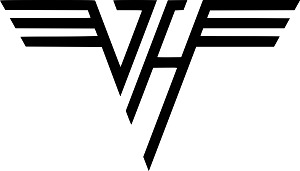
Van Halen’s logo also uses its overall form to make a balanced and striking shape. Though it’s only text, the iconic accents of the wings on each side makes it one of the most widely recognizable logos in the music world.
BRANDMARKS
“Brandmarks” are usually everyone’s initial thought when they think of logos. These are icons that symbolize the whole, without relying on a wordmark or text to spell it out.

The Rolling Stones logo is an icon that symbolizes the band’s rebellious nature of pushing social boundaries, while still making a nod towards Mick Jagger’s ironically large mouth.

The Ramones logo design resembles the U.S. Presidential Seal and helps portray an “All-American band.” This logo also contains some hidden meanings in the upward arrows, the apple tree branch and the baseball bat. The upward arrows symbolize aggression, while the apple tree branch reaffirms their all-American attitude, as “being as American as apple pie.” It is said that the baseball bat is merely there due to Johnny being a baseball fanatic, but some fans dispute this explanation.
COMBINATION LOGOS
Combination logos are self-explanatory and can include a brandmark and wordmark or brandmark with letterhead.
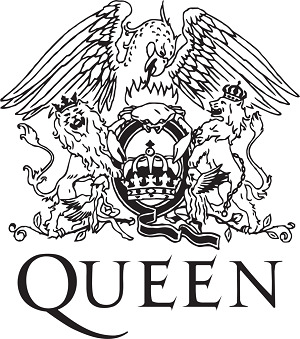
Queen’s highly ornate logo speaks well to the band’s over-the-top persona. Much like the Ramones’ logo, they also use a well-known seal, in this case drawing inspiration from the Royal coat of arms used by the British royal family. The Queen logo is further personalized with zodiac signs of each of the band members.

Public Image LTD combines a lettermark with brandmark and, in turn, transforms the lettermark into a pun, a good trick in making it a memorable logo.
Logo images courtesy of the artists and used only to highlight graphic design features.

Sabrina Franek is a graphic designer at Twisted Rope and works in our Buffalo office.
#SabrinaFranek#graphicdesign#logos#bands#music#design#logostyles#beatles#tool#emersonlakeandpalmer#vanhalen#rollingstones#ramones#queen#publicimageltd
0 notes
Text
Ill Communication: Going “viral” and the impact on brands

Loose Ends for Monday, July 9, 2018
By Patrick Connelly Project Manager, Twisted Rope
In the social media age, the last thing any brand wants is to “go viral” for the wrong reasons.
Yet, like in what we saw recently when IHOP announced a new campaign or when Best Buy unveiled a change to its longtime logo, it’s seemingly easy to be thrown to the wolves as brand changes are negatively received or immediate feedback isn’t quite as favorable as even the best marketing minds may anticipate.
Does the adage that “any publicity is good publicity” still hold true for brands or are these “Twitter Moments” of ridicule detrimental to a business beyond the few days where they are thrusted into the spotlight and become punchlines on the late-night comedy circuit or Twittersphere?
“The concept of viral marketing is by no means new,” Vishal Patel, a digital marketer, wrote as he delved into its origination and long-term impact. “Word-of-mouth marketing, viral’s forefather, has been around for ages. The principle behind word-of-mouth marketing is simple: use influencers to generate peer-to-peer product recommendations or buzz.”
“I don’t think viral is anything a brand should aspire to,” Ann Handley, an author and chief content officer at MarketingProfs, told Forbes. “If it happens, it’s a happy accident. But it’s never anything that a company should actively pursue because I don’t think it’s a worthwhile endeavor.”
A campaign gone viral does bring short-lived brand awareness like in what we saw when IHOP mysteriously announced it would be changing its famous moniker that had been short for "International House of Pancakes" to “IHOb.” The internet went wild, pondering just what the ‘b’ would be short for. Later, IHOP announced the change was temporary as the company was looking to promote its “burgers” and the fact unknown to many that IHOP, indeed, has menu options beyond breakfast.
"We are definitely going to be IHOP but we want to convey that we are taking our burgers as seriously as our pancakes," the company’s president, Darren Rebelsz, relayed to CNN Money.
As part of the campaign, IHOP updated its Twitter handle to @IHOb and Rebelsz even went as far as updating his position on his LinkedIn profile to “Chief Burger Officer.” After the announcement, he fielded interviews to ensure patrons that the change was merely a gimmick and that IHOP would permanently remain by its original name once the campaign concludes.
"There was a reluctance at first from the [IHOP] franchisees because the brand has made a couple different runs at promoting [non-breakfast]-type offers in the past and they've typically fallen flat," Rebelez told AdAge. "We knew we were going to have to do something different."
The wake of the IHOB campaign was “exactly” what the company was looking for, Rebelsz said -- though he did admit the company did not expect the “magnitude” of how much of an impact it would have in the mainstream media.
Well that was a crazy week. pic.twitter.com/5XvIErpSoH
— IHOb (@IHOb) June 15, 2018
TONGUE IN CHEEK: In the viral social media flood that followed IHOP's announcement of a name change, the company kept a cool head and played right along with all the jokes and jabs.
While IHOP may have been eager to play to the masses with the marketing ploy, some feedback like what Best Buy saw with its logo change can come as unexpected, particular at times that should be exciting for a brand. “The proliferation of marketing and advertising, coupled with the onslaught of millions of media channels in today’s world, has given cause for consumers to tune out and effectively avoid a great deal of traditional supplier driven messaging,” Patel wrote.
Patel described viral marketing today as more of a “long con” as brands use it to “seed” ideas in the minds of consumers who may not be converted to customers right then and there, but perhaps in the future.
“Viral marketing, like all marketing, is hit or miss,” Patel added. “However, viral marketing by nature is often more risky or controversial than traditional marketing. If done improperly viral marketing can backfire and create negative buzz.”
Graphic design blogs and the rarely-benevolent folks of Twitter were quick to point out Best Buy’s new logo that shook up the placement of the traditional “yellow tag” in favor of simple block typeface looked a lot like that of Anheuser-Busch’s Bud Light (which itself had created a viral craze with the recent “Dilly Dilly” campaign).
The new Best Buy logo is “more modern and easier to read, especially in today’s digital world,” the company had said in a news release on its blog when it was unveiled. The new placement of the yellow tag provides a “graphic punctuation and a visual connection to our history,” Best Buy added.
“The updated logo is true to our heritage, but it’s really cleaned up,” said Whit Alexander, Best Buy’s chief marketing officer. “It’s an evolution toward the future and we’re really excited about that.”
Along with the new logo, Best Buy is rebranding its voice and showcasing its employees as a means of “telling the story of our people,” Alexander said. “Our people are our insurmountable advantage.”
youtube
CHANGING THE MESSAGE: Along with its logo change, Best Buy is showcasing its helpful employees which it believes gives the company a heads up over competitors and online shopping.
In what seems like stark refute to the feedback the new logo received, Best Buy’s new advertising campaign has turned heads and received praise from media and blogs for showcasing the customer experience in an age trending toward fully-digital shopping.
There are many advantages to viral marketing. Marketers are quick to point out advantages like the mainstream media exposure a campaign that’s gone viral can have and the low or non-existent advertising costs, like the free publicity IHOP garnered with the Rebelsz interviews where he explained the company’s motive and rationale and countless media outlets and radio stations covering the story. IHOP, for better or worse, has entered the national conversation when it had been just another place to grab a bite to eat.
“We believe that viral advertising is a cost-effective way to reach a large-scale audience,” wrote Alan G. House, an analyst at Value Line, a publisher that offers research to investors. “Most of the major advertisers have a social marketing department, so we believe that it represents another avenue for growth, as well as a means of diversification. We think that viral advertising is here to stay and that companies must realize both the positive and negative implications of this market approach.”
When poorly received, House suggests brands counteract the viral campaign with something more sensible. Dealing with adverse feedback “is difficult,” he wrote. “The best solution could be to launch a new viral campaign that is more socially acceptable or to address the controversial [item] in a responsible manner.”
The sustained impact that poorly-received viral marketing can have remains a new frontier for marketers. While “shareability” can certainly be measured through analytics, what lasting effects resonate with consumers a decade down the road following a viral campaign remains to be seen and financial numbers haven’t yet been examined perhaps as they should.
The focus, according to Handley, should be avoiding the potential of going viral, weighing possible outcomes before the launch of a campaign and aiming to create “great moments” with customers rather than viral ones.
“Marketing is art plus intent,” Handley said. “Creativity … is a big piece. The other piece is intent: what are you trying to drive, what do you want them to do? If you can address those two buckets, you’ll create some great marketing.”
LEARN MORE
Explore these links to learn more about viral marketing.
CIO takes a look at its 10 worst marketing campaigns
Gumas, an advertising agency, examines ways to measure success (or lack thereof) of a viral campaign
SocialNewsDaily examines more campaigns by big brands that have gone “bad”
USA Today puts a spotlight on how one-on-one communication with consumers posting negative reviews can harm a business and, sometimes, be beneficial

Patrick Connelly is a project manager at Twisted Rope. Follow Patrick on Twitter at @thatswhatPCsaid.
#patrickconnelly#socialmedia#marketing#brands#publicity#IHOP#IHOb#BestBuy#logos#BudLight#Twitter#viralmarketing#viral
0 notes
Text
Hit Send: Email marketing, send times and what’s best

By Patrick Connelly Project Manager, Twisted Rope
What's the best time to send an email? That may vary, depending on who you ask.
The goal of email marketing is to have your message read by as many people as possible and, with a little luck, getting those people to click through to a website where they can learn more about what you're offering and, for a lot of industries, make a purchase or accept an invitation.
Statistically (and as Entrepreneur depicts in this clever infographic), the top minds in email marketing will tell you 10 a.m. on a Tuesday. However, it's important to decipher a bit more information about just what it is that you're doing before simply walking away and scheduling a launch time.
There are a number factors at play when ascertaining what may be the best time. When beginning to pinpoint a time, it's important to first consider the following:
Who's in my audience (in email marketing terms, your "recipient list")?
What kind of email am I sending?
What am I hoping to achieve with this email?
There's a plethora of benchmarks and studies available online to help sort through the madness and find what works best for your brand or business. We’ll walk through a bit of it below to help you arrive at a time and day of the week that could net the best results by knowing what to consider. Our team at Twisted Rope has thrown in some knowledge they’ve learned in sending thousands of emails on behalf of clients.
WHO'S IN MY AUDIENCE?
We're throwing a lot of questions in your face in this article, but this is the most important.
Here are some things to look at right off the bat:
Is my recipient list made up of folks familiar with my brand or am I reaching out to a group of potential customers (i.e., "leads")?
Are my recipients receiving emails via their work email address (an address that includes a business domain) or a personal email address (an address where the domain is Gmail, Yahoo or one of the many other free email clients available for common use)?
Does my list include a pool of contacts in the same time zone, nearby time zones (like the four in the U.S.) or are they scattered around the world in varying time zones?
“Best-in-breed email programs should regularly evaluate their deployment times,” the consumer credit reporting agency Experian wrote in a report. “Since the optimal time to mail customers is not a static concept, optimal mailing time often depends upon your customers’ behaviors, inbox crowding and the deployment times of marketers.”
Open rates are highest on weekends for consumers, while, for business-to-business emailing, Tuesday mornings are considered optimal. Before mobile devices revolutionized the email industry and put an inbox in a person’s fingertips nearly all hours of the day, scheduling launches between 8 and 10 a.m. on Tuesdays, Wednesdays and Thursdays were the steadfast standard. The quick adoption of smartphones changed things, giving marketers a new wild, wild west to conquer.
Newer data shows 40 percent of people check their phone within a few minutes of waking up each morning. Another 30 percent take a final look minutes before heading to bed.
“With consumers constantly active on their mobile devices, especially outside of standard 9-to-5 working hours spent at an office desktop, testing sends outside the traditional morning hours is essential,” wrote Vertical Response, a company operating an email marketing platform used to grow businesses.
If the list of contacts you’re sending to are loyal to your brand, there’s a lot more flexibility in when you can send. These folks are likely to open your email regardless of when it may appear at the top of their inbox. If the list is made up of new customers or contacts, however, it would make more sense to send at one of the more universally-optimal times as your brand or company begins to build credibility and a following.
By that same token, it’s not a bad idea to “split up” a contact list into more than one grouping and experiment a little by then sending the divided lists at different times. One list could have the long-time recipients, while another could have the new crew. Taking it a step further to divvy it up by time zones could also net better results by sending to recipients in different parts of the world at the most optimal time for the recipients themselves.
If your list or lists include mainly work email addresses for recipients, sending at an optimal time for the business world makes much more sense than sending in the evening when the email could fall below a stack of others the recipient sees upon arriving in the office the next morning. Likewise, for recipients with generic email addresses, their evening time when they are home after a long day at work, relaxing and binging the latest Netflix-obsession would likely be favorable time to catch their attention.
WHAT AM I SENDING AND WHAT AM I HOPING TO ACHIEVE?
Finally, let's take a look back at our real goal. In a perfect world, what type of email are we sending and what are we hoping people do if they open it? Do we want recipients to click to go to a website and learn more about a topic, check out what’s on sale, take a survey or perhaps register for an event? Sticking to what the studies for suggested send times in particular business niches tends to be the best way to go about it.
But, all this, really, just brings us to our last point …
DO WHAT WORKS BEST FOR YOU!
Experimenting and seeing what works best in actual practice for a brand or company over a sustained period of time will give you data to work with and, conversely, work around.
While some studies focus on the best day of the week or the best time, others suggest avoiding the peak times and focusing, instead, on when a recipient’s inbox may be receiving fewer messages.
The real truth behind this imperfect science is it’s best to test, workshop how your company or brand may be going about email marketing, refine, retool, take subject lines into account and keep at it.
What's the worst time to send an email? Well, that's a topic for another day …
Hit Send, by the Twisted Rope email marketing team, takes an inside look at a variety of facets on the email marketing spectrum as well as industry trends. Learn how your business or brand can optimize its email marketing initiatives by contacting [email protected].
LEARN MORE
Explore these links to learn more about the send times, days and best practices.
CoSchedule analyzes 10 different studies to try to find consensus send times and dates
HubSpot examines what works best in getting recipients to take action

Patrick Connelly is a project manager at Twisted Rope. Follow Patrick on Twitter at @thatswhatPCsaid.
0 notes
Text
Contacting European clients changes under GDPR

By Patrick Connelly Project Manager, Twisted Rope
The landscape of email marketing changed as the new GDPR rules and regulations took effect.
The new rules established under the General Data Protection Regulation impact how businesses can contact email recipients in the European Union. This ushers in a change that makes the data storing of personal information more transparent while further protecting the digital rights of individuals living in those countries.
For businesses around the world to continue contacting customers in EU countries via email, they must have received formal consent and have carefully-documented the consent through record keeping.
This impacts most of Europe with the exception being 15 outlying countries operating outside the EU. The GDPR also still protects individuals living in the United Kingdom as the U.K.’s official withdrawal from the EU is scheduled for next March.
Even as the deadline has now passed, many businesses, especially those in the United States, are still confused as to what’s permissible going forward. One survey estimates 84 percent of U.S.-based companies aren’t fully certain what the new rules could mean for their business.
CONSENT
What actually constitutes consent going forward has caused many businesses to become befuddled with the GDPR.
Quite simply, to continue emailing a contact, a business must have received from that person written and documented “freely given” consent to how their information will be used. It should also have been obtained in a way that was easy to understand with details on what, exactly, the business will be doing with the information.
That’s certainly a mouthful, but perhaps the best and most palatable way to break it all down. Basically, by some means that was easy to understand (like the traditional “Sign Up for Our Newsletter” form we’ve become accustomed to seeing around the internet) a person must:
Enter their information knowingly and by their own free will.
Have understood what they were signing up for.
Companies not complying could be subject to costly fines, so it’s no surprise folks around the globe are taking the GDPR seriously, having made the needed adjustments and dedicated staff to stay on top of requirements going forward.
If a business has already received consent from an individual (and can back it up through its internal records), there’s no need to seek permission a second time, according to the new rules. Mailchimp delves into this further here.
RECORD KEEPING AND HOW LONG TO STORE DATA
The language of the regulations is vague in just how long businesses may keep an individual’s personal information on file before they must, for lack of better phrasing, re-seek consent. This has caused more confusion for many as the language only specifies data should be held on file “no longer than is necessary for the purposes for which the personal data are processed.”
Huh?
A good rule of thumb businesses are using for how long to keep data on file for marketing purposes is however long a particular individual could still be considered a customer or client, writes Cynthia Lai, a customer solutions manager at Epsilon Abacus, a data cooperative for catalog and multi-channel retailers in the U.K.
“If the data is captured for the purpose of direct marketing, part of this justification could be that brands should be allowed to store the data for as long as the individual can be considered a customer,” Lai wrote on Epsilon Abacus’s blog. “So the question really is: For how long after completing a purchase can the individual be considered a customer?”
Epsilon Abacus found this could vary by business sector but that customers returning to a brand for a follow-up purchase predominantly did so within 50 months.
“The brand, therefore, has a legitimate interest to use direct marketing to inform the customer about its products and offers [in that window],” Lai wrote. “Ultimately, each company needs to decide how long it will keep personal data,” she added.
Companies also need a well-maintained and documented database where the personal information for all individuals is clearly outlined, updated and easy to remove at the drop of a hat if a recipient chooses to opt out. Additionally, the rules outline that a business should only request information it needs and keep an eye on only collecting data that is “adequate, relevant and limited to what is necessary in relation to the purposes for which they are processed.”
HOW IT IMPACTS COMPANIES IN NORTH AMERICA AND WHAT’S NEXT
Businesses outside of the EU are expected to be compliant with the new GDPR requirements when contacting and conducting business with individuals in the UK, as well as in how they internally process the data.
The big change facing North American companies is in how they collect consent. Rather than just a quick-and-dirty fillable online form, these companies will need to have outlined at the outset when a customer signs up for a list more specifically what the company's intentions with the personal information may be. They should also link to the nitty-gritty details in a privacy policy or data protection policy where the specifics required by the GDPR are described in length.
The helpful website Compliance Junction offers a checklist for U.S. companies preparing and outlines more details to take into consideration, like data auditing.
LEARN MORE
Explore these links to learn more about the GDPR and email marketing.
Recode answers some frequently asked questions surrounding the GDPR
A UK law firm breaks down consent under the GDPR
CNBC takes a further look at what US companies need to keep in mind
Read the full 88-page document outlining the GDPR
AdWeek examines how this new era is more of an opportunity to build trust with consumers, rather than a burden

Patrick Connelly is a project manager at Twisted Rope. Follow Patrick on Twitter at @thatswhatPCsaid.
#GDPR#email#emailmarketing#brands#EU#EuropeanUnion#dateprotection#dataprivacy#consent#storingdata#patrickconnelly
0 notes
Text
Twisted Trash Duty Quotes
Each week, our global staff at Twisted Rope takes turns taking out the office trash. To make things a little more fun, each of our team members also contributes a quote to post on our community board in the Buffalo office.
Here’s a look back at some of our favorites:
"Art washes away from the soul the dust of everyday life." -Pablo Picasso (https://bit.ly/1U64GPR)
"Don't let your dreams be dreams." -Jack Johnson (https://bit.ly/23Xxu07)
"Give what you have; to someone it may be better than you dare to think." -Chinese Fortune Cookie
"Compare yourself to who you were yesterday, not to who someone else is today." -Jordan B. Peterson (https://bit.ly/2I7sW7c)
"Design is not art - the end goal of design should be to solve a problem for people." -Tinker Hatfield (https://bit.ly/1LkJGRq)
"How do I get my creative juices flowing? I just let it happen. And if I'm not being or feeling creative, I just let that flow as well because that means its a downloading period. That's a time where I'm not supposed to be creating. I'm supposed to be learning." -Erykah Badu (https://bit.ly/2IaTQv4)
"Nothing ventured, nothing gained." –Anonymous
"How we spend our days is, of course, how we spend our lives. What we do with this hour, and that one, is what we are doing." -Annie Dillard (https://bit.ly/2qujNLZ)
"The role of creative leader is not to have all the ideas; it's to create a culture where everyone can have ideas and feel that they're valued." -Ken Robinson (https://bit.ly/1MBoiVO)
"Originalidade é para pessoas de memórias curtas." -Grayson Perry (https://bit.ly/1P0LWSj)
"Learn the rules like a pro so you can break them like an artist." -Pablo Picasso (https://bit.ly/1U64GPR)
"两个黄鹂鸣翠柳,一行白鹭上青天。 窗含西岭千秋雪,门泊东吴万里船。" -杜甫
"Honesty is the fastest way to prevent a mistake from turning into failure." -James Altucher (https://bit.ly/2utN8uo)
"If something is wrong, fix it now. But train yourself not to worry, worry fixes nothing." -Ernest Hemingway (https://bit.ly/1OjC0iE)
"If you're alive, you're a creative person." -Elizabeth Gilbert (https://bit.ly/2CEaIrf)
"A photograph doesn't gain weight or lose weight, or change from being happy to being sad. It's frozen. You can use it, then recycle it." -Chuck Close (https://bit.ly/1PMDoP8)
"Act as if what you do makes a difference. It does." -William Jones ( https://bit.ly/29ZZQq3)
"Believe you can and you're halfway there." -Theodore Roosevelt (https://bit.ly/1KMx4Qm)
"Look up at the stars and not down at your feet. Try to make sense of what you see, and wonder about what makes the universe exist. Be curious." -Stephen Hawking (http://bit.ly/1wotoQ4)
"Any intelligent fool can make things bigger, more complex, and more violent. It takes a touch of genius - and a lot of courage to move in the opposite direction." -Ernst F. Schumacher (http://bit.ly/1t9CR1k)
"Life isn't about finding yourself. Life is about creating yourself." -George Bernard Shaw (http://bit.ly/1LmNp3f)
"To escape criticism: Do nothing. Say nothing. Be nothing." -Elbert Hubbard (https://lnkd.in/gUbYwZj)
"The best preparation for tomorrow is doing your best today." -H. Jackson Brown, Jr. (https://lnkd.in/g85c_PJ.)
"The question you should be asking isn't, 'What do I want?' or 'What are my goals?' but 'What would excite me?' - Tim Ferriss (https://lnkd.in/gjvCTEb)
"Expose yourself to your deepest fear; after that, fear has no power, and the fear of freedom shrinks and vanishes. You are free." -Jim Morrison https://lnkd.in/d2YyJdS
“A designer knows he has achieved perfection not when there is nothing left to add, but when there is nothing left to take away.” -Antoine de Saint-Exupéry https://lnkd.in/dGPcq9d
"You cannot build a better world without improving the individuals. To that end, each of us must work for his own improvement and, at the same time, share a general responsibility for all humanity, our particular duty being to aid those to whom we think we can be the most useful." -Marie Curie (http://bit.ly/1mBHdZS)
"Great things in business are never done by one person. They're done by a team of people." -Steve Jobs (http://bit.ly/1BClLwb)
"All we have to decide is what to do with the time that is given to us." -Gandalf (http://bit.ly/2EMoo1q)
"I take the position that I'm always some degree wrong, and the aspiration is to be less wrong." -Elon Musk (http://bit.ly/1IzMjOl)
"Confidence comes not from always being right but not fearing to be wrong." -Peter T. Mcintyre (http://bit.ly/2o1e4wc)
"I don't care that they stole my idea... I care that they don't have any of their own." -Nikola Tesla (http://bit.ly/1LSrTUi)
"You've got to get up every morning with determination if you're going to go to bed with satisfaction." -George Horace Lorimer (http://bit.ly/2EhEzY4)
"Success is not final; failure is not fatal: It is the courage to continue that counts." -Winston S. Churchill (http://bit.ly/1M4tbKF)
"The secret of getting ahead is getting started." -Mark Twain (http://bit.ly/1cnmrSI)
"Giving up on your goal because of one setback is like slashing your other three tires because you got a flat." -Anonymous
"Il vaut mieux avoir des remords que des regrets." -Unknown
"The past is only the future with the lights on." -Mark Hoppus (http://bit.ly/1O8sUpm)
"Fortune does favor the bold and you'll never know what you're capable of if you don't try." -Sheryl Sandberg (http://bit.ly/27zHtNC)
"You're only here for a short visit. Don't hurry, don't worry and be sure to stop to smell the flowers along the way." -Walter Hagen (http://bit.ly/2DBBmhK)
"Too often we underestimate the power of a touch, a smile, a kind word, a listening ear, an honest compliment, or the smallest act of caring, all of which have the potential to turn a life around." -Leo Buscaglia (http://bit.ly/2rCxhbu)
"I've learned that you shouldn't go through life with a catcher's mitt on both hands; you need to be able to throw something back." -Maya Angelou (http://bit.ly/1FT64m0)
"The price of greatness is responsibility." -Winston Churchill (http://bit.ly/1M4tbKF)
"If you always do what you've always done, you'll always get what you've always got." -Mark Twain (http://bit.ly/1cnmrSI)
"You have brains in your head. You have feet in your shoes. You can steer yourself in any direction you choose." -Dr. Seuss http://bit.ly/1NQ5iIh
"The early bird gets the worm but the second mouse gets the cheese." -Willie Nelson http://bit.ly/1JtsQ3q
"Be brave enough to live creatively. The creative place is where no one else has been. You have to leave the city of your comfort and go into the wilderness of your intuition. You can't get there by bus, only by hard work, risking and by not quite knowing what you're doing. What you'll discover will be wonderful: yourself." -Alan Alda http://bit.ly/2FI9UAj
"It's not who you are that holds you back, it's who you think you're not." - Jean-Michel Basquiat - https://lnkd.in/eTwaVf6
"It is not in the stars to hold our destiny but ourselves." - William Shakespeare - https://lnkd.in/eUYKk7k
"No accident ever comes late; it always arrives precisely on time." - Mark Twain - https://lnkd.in/eFW9Q8C
“Every human has four endowments - self awareness, conscience, independent will and creative imagination. These give us the ultimate human freedom... The power to choose, to respond, to change.” – Stephen Covey (https://lnkd.in/erjWFM8)
“Tout groupe humain prend sa richesse dans la communication, l’entraide et la solidarité visant à un but commun : l’épanouissement de chacun dans le respect des différences.” - De Françoise Dolto
“The question isn’t who is going to let me, it’s who is going to stop me.” – Ayn Rand (https://lnkd.in/eiZFqTE)
"If it is important to you, you will find a way. If not, you'll find an excuse." - Ryan Blair (https://lnkd.in/eHhiMwD)
"The prerequisite of originality is the art of forgetting, at the proper moment, what we know." - Arthur Koestler (https://lnkd.in/eeebqR3)
"Any type of love, it will be shown. Like every single tree, reach for the sky." - Tom DeLonge (https://lnkd.in/ewcN3gW)
"You miss 100% of the shots you don't take." - Wayne Gretzky (https://lnkd.in/eThmeVU)
"If we did all the things we are capable of, we would astound ourselves." - Thomas Edison (https://lnkd.in/gBbg-KQ)
"Don't be busy, be productive." - Unknown
"You cannot do a kindness too soon, for you never know how soon it will be too late." - Ralph Waldo Emerson (https://lnkd.in/gmNqhzn)
"Some people are always grumbling because roses have thorns; I am thankful that thorns have roses." - Alphonse Karr (https://lnkd.in/e2T2pkx)
"The strength of the team is each member. The strength of each member is the team." - Phil Jackson (https://lnkd.in/ewXY5V7)
"In the depths of winter I finally learned that there was in me an invincible summer." - Albert Camus (https://lnkd.in/eCTv646)
"Na konci každé cesty začíná další." - Pavel Kosorin (https://lnkd.in/ewZVsa2)
"The most effective way to do it is to do it." - Amelia Earhart (https://lnkd.in/gf9hCTx)
"Anxiety is the hand maiden of creativity."- T.S. Eliot (https://lnkd.in/emDESJ8)
"Curious that we spend more time congratulating people who have succeeded than encouraging people who have not." - Neil DeGrasse Tyson (https://lnkd.in/ecPkExF)
"Unless Someone like you cares a whole lot, nothing is going to get better. It's not. - The Lorax by Dr. Seuss (https://lnkd.in/ePr8yW6)
"No one can make you feel inferior without your consent." - Eleanor Roosevelt (https://lnkd.in/eTT9jRd)
“Life opens up opportunities to you, and you either take them or you stay afraid of taking them.” -Jim Carrey (https://lnkd.in/ezsShUk)
"Don't cry over spilled milk. By this time tomorrow, it'll be free yogurt."-Stephen Colbert (https://lnkd.in/eaFxHyW)
"Life is short, so eat dessert first." - Jacque Torres (https://lnkd.in/eR3ZFWY)
知之者不如好之者,好之者不如乐之者. - 孔子
"Coming together is a beginning. Keeping together is progress. Working together is success." - Henry Ford (https://lnkd.in/dBP-Puv)
"Be the change you wish to see in the world." - Mahatma Gandhi (https://lnkd.in/d-NV2uA)
"Time flies like an arrow, fruit flies like a banana." -Groucho Marx (https://lnkd.in/eRd78SA)
"Every great developer you know got there by solving problems they were unqualified to solve until they actually did it." - Patrick McKenzie
"I choose to believe that I was programmed to believe!" -Superstitious Robot (Futurama - https://lnkd.in/e95gXeB)
"Rien ne sert de courir, il faut partir à point.” - Jean de la Fontaine (https://lnkd.in/eKdCXRs)
"Go as far as you can see, when you get there you will be able to see farther." -Thomas Carlyle
"Always be a first-rate version of yourself instead of a second-rate version of somebody else." -Judy Garland (https://lnkd.in/eMit8Ys)
"A single act of kindness throws out roots in all directions, and the roots spring up and make new trees." - Amelia Earhart (https://lnkd.in/gf9hCTx)
"Have a mind that is open to everything and attached to nothing." - Tilopa (https://lnkd.in/gYk7fxi)
"Create more than you consume." - Cara Madrid (Twisted Rope Graphic Artist)
"Really pay attention to negative feedback and solicit it, particularly from friends. Hardly anyone does that and it's incredibly helpful." -Elon Musk
"It's not the time in your life, it's the life in your time." - Bruce Springsteen
"If your dream doesn't scare you, it's too small." -Mark Batterson (https://lnkd.in/dQhh-u6)
"If you pay attention to the world, it's amazing. If you don't, it's whatever you think it is." -Reggie Watts (https://lnkd.in/dPSGVU4)
"Just cause something' ain't been done, Don't mean it can't be did." -Shel Silverstein
“When you take action, you stop operating from a ‘what if’ standpoint to a ‘what now’ standpoint.” -Edreys Wajed
"If you aren't in the moment, you are either looking forward to uncertainty or back to pain and regret." - Jim Carrey
"There are no secrets to success. It is the result of preparation, hard work, and learning from failure." - Colin Powell
"Love yourself as I do - RELENTLESSLY." - Sean Stephens
"These pretzels are making me thirsty!" - Cosmo Kramer
0 notes
Text
Whataboutism: An impediment to improvement

By Greg Norton President, Twisted Rope
In politics, “Whataboutism” has become the tool of choice. Don’t address criticism, instead deflect it by redirecting it towards your opposition or, better yet, direct it back at the questioner. “What have I done about it? Well, what have you done about it? Next question.”
But it’s not just politics where Whataboutism is prevalent. It is so easy to use when we are faced with criticism, “Well, what about … ?”, and we learn it so early in life. When my mom told me that my room was a mess and I had to clean it, it was so easy to shoot back with, “Well, what about his room?!” Deflect and redirect all in one fell swoop. It didn’t get me out of cleaning my room, but using Whataboutism made sure my brother got called out for his room, too. If I was going down, I was taking someone with me.
Unfortunately, when we enter the workplace that tactic can be a huge liability for us to development as professionals. We may not even verbalize it, but when we use the Whataboutism defense we are deflecting what could be ̶ and what I would argue is ̶ valuable feedback. In short, it prevents one from improving because “why should I stop doing that when she does the same thing?” Well, one has no idea if she is being told the same thing in private conversations, but more than that, what does it matter?
As a manager, you may be reading this and thinking, “Man, Employee X does that all the time.” Deflection of feedback is often the tactic used by the most frustrating of employees and some may even direct it back at you as the supervisor, “Well, I don’t see you doing that.” When there’s a Whataboutism culture in a company it is a huge impediment to the company’s ability to improve. Very little moves forward and negativity reigns.
If you see it happening, what can you do about it? The first step is to look at yourself ̶ are you doing it? Are you taking direct or indirect feedback and responding to it with a quick “what about you/them?” thought or comment? You have to be honest with yourself because it is so easy to do it and it’s something that you likely have done without realizing it. To stop it, you have to stop it. Listen to what the feedback is and think, “How can I change my behavior or use this to improve my performance?” If you don’t, then you are just deflecting and you lose the credibility you need to address the Whataboutism in others.
From there, when you see the tactic being used, call it out for what it is. “Yes, he may do it as well, but we are talking about you right now.” It won’t be easy, but if it’s not addressed, the Whatboutism, and the resulting negativity, will just continue.
Greg Norton is the president of Twisted Rope. Follow Greg on Twitter at @norton620 or send him an email at [email protected].
0 notes
Text
The Collection: M.C. Escher
Each week, our design team gathers a collection of images that inspires and sparks their creativity. With a new theme every week, they find pictures that excite, intrigue or challenge their artistic viewpoints in some way.
This week’s theme: M.C. Escher
As one of the most famous graphic designers in the world, M.C. Escher was the inspiration for our designers. Using mathematical themes, his portfolio of work features more than 400 lithographs and wood carvings, and more than 2,000 drawings and sketches, according to his biography.















0 notes
Text
Good ways to help our company learn ‘bad UX’

By John Messersmith Developer / UX Designer, Twisted Rope
In our last article we discussed the User Experience design process we developed internally to fit our existing production procedures at Twisted Rope.
A key component to our process is the involvement of the entire company, not just the User Experience Design (UXD) team, working together to produce a good user experience in our products.
We know that we have experienced designers, developers and project managers that can help us solve our UX problems. In many cases, these team members have seen solutions to the design challenges we're addressing or can draw on a past experience that was similar.
Our process intends to build on this knowledge and have the team conduct heuristic evaluations throughout every stage of design and production. As part of this, we are working to raise general awareness of UX concepts and conventions as well as educating the team on the “10 Heuristics of User Interface Design.”
One tactic in our strategy was to give presentations at our weekly company meeting. Every Wednesday at 11 a.m. EST, the company gathers in their respective offices ‒ from Los Angeles to Amsterdam ‒ and we meet online.
Included in our weekly reports of ongoing projects and company KPIs (Key Performance Indicators) are special presentations given by individuals or groups within the company meant to shine a spotlight on things like new company initiatives. This is where our UXD team knew we would best be able to reach everyone to begin our UX crash courses.
In approaching these presentations, there were a few things we needed to keep in mind. The concepts we were about to address were somewhat abstract and unknown to many people. We knew technical talk was not the right choice. Waxing poetic about the merits of feedback for 20 minutes also would not have gone over well.
While these concepts are very interesting and applicable to the company, we couldn’t just mandate them as such. We needed to show it ‒ and show it in a way that would make it digestible and stick in their minds. Our goal was to keep the educational sessions short, fun and informative.
To keep them short, we agreed to divide our talks into three presentations. For each, we would introduce the heuristic principles covered that week. Each would be accompanied with the definition, followed by a brief discussion and then segue into some examples from our own client projects as well as examples from the web and other sources.
How about keeping them fun? We thought an interesting take would be to find movie or TV clips that show people in situations in which they are struggling with a bad user interface. We would use this clip to introduce the concepts for that day’s discussion.
CAN I GET SOME FEEDBACK?
We began our first presentation with a clip from the film “Get Smart” in which our hero finds himself in an embarrassing situation. If the device he was using provided clearer feedback on the state of the system or, better yet, some error prevention, it might have helped to save his dignity.
This clip lead to our discussion of the UX principles of “Feedback (visibility of system status),” “Error Prevention” and “Recovery (help users recognize, diagnose and recover from errors).”
youtube
GETTING SMART ABOUT USER EXPERIENCE DESIGN: Steve Carell, as Maxwell Smart in the 2008 movie reboot of the classic TV series, "Get Smart," experiences an embarrassing moment that perhaps could have been prevented with even a minimal amount of user feedback. Our Twisted Rope UXD team used this video and several others to break the ice and give our employees a crash course on the principles of user experience.
HELP! I NEED SOMEBODY
Our discussion of “Help and Documentation,” “Flexibility and Efficiency of Use,” and “Recognition Rather Than Recall” began with the BBC Two show, “Miranda.”
We think Miranda’s frustration with the speech recognition menu system could be alleviated by instead including an option for keyboard input (Flexibility and Efficiency of Use) or by implementing a feature to allow access to help sooner in the process.
youtube
HARD TIMES: In another video portraying bad UX, Miranda of the eponymous BBC Two program is stuck trying to communicate with an interface that can't understand what she's saying.
DEVELOPERS RUNNING THE ASYLUM
We ended the heuristics presentations with HBO’s “Silicon Valley” to introduce the last four principles we covered: “Match Between System and the Real World,” “Consistency and Standards,” “Aesthetic and Minimalist Design,” and “User Control and Freedom.”
The clip covers a wide variety of possible usability issues. In addition, it has the added benefit of illustrating to our team members the importance of getting your work in front of users and how their understanding of your interface can be very different from what you intended.
youtube
TOTALLY FREAKED OUT: In one of the signature scenes of HBO's "Silicon Valley," software developer Richard, played by Thomas Middleditch, can't seem to rationalize with users having a difficult time adjusting to his new app. The disconnect between developers and the users actually using a website or app can sometimes prevent it from becoming truly user friendly.
BONUS
In our search for the above clips, we came across an excellent demonstration of the ideas of affordances, specifically, and an inspired telling of the human-computer interaction (HCI) and User Experience field in general, produced by Vox. We thought that this was so well done, we had to share it with the company and provide them some insight into the “why” of what we do.
youtube
PULL, DON'T PUSH: "Norman doors" are a real life example the improper use of an affordance.
One of the satisfying outcomes of these presentations is that it got team members talking. Afterward, team members would tell us their personal web and interface foibles or frustrations that were illustrated by the principles we covered in the talk.
It speaks of a paradigm shift among our team members. They can now see their past difficulties with websites not as a weakness in their (the user) skills or abilities, but rather as a defect of a poorly designed product.
In one specific case, a few days after the “Norman doors” presentation, one of our project managers meeting with a client out in the field posted a picture on our office messaging system of another Twisted Rope team member having to push open a door that had bars (affordances) that suggested the door should be pulled to open. The caption he added to his picture? “Tsk tsk tsk … Get rid of your Norman doors!”
Norman doors are now a cultural reference within the company. Don’t you just love getting feedback?
Follow our UXD team on Twine and at twisted-rope.com as we design a process that works for us, helping to improve user experience for our clients, as well as their customers.

John Messersmith is a developer and UX designer at Twisted Rope who works with the UXD and email marketing teams in our Buffalo office.
#UXD#UXUI#UX#UI#badUX#UXconcepts#UXprinciples#designthinking#users#usability#workplaceteams#companymeetings#wearetwistedrope#GetSmart#Miranda#SiliconValley#feedback#errorprevention#recovery#helpanddocumentation#flexibility#efficiencyofuse#recognition#affordances#Normandoors#HCI#JohnMessersmith
0 notes
Text
Super Bowl offers brands a chance to send 'strong signal'

Loose Ends for Wednesday, January 31, 2018
By Patrick Connelly Project Manager, Twisted Rope
A 30-second commercial in Sunday's Super Bowl LII will cost brands more than $5 million for an opportunity to reach over 110 million viewers.
With a global audience, brands advertising during the game aim to generate a buzz and get people talking, with the hopes to sell a few products in the days, weeks and months that follow the final down of the fourth quarter.
One brand testing the waters for the first time this year is Pringles. The potato chip subsidiary of Kellogg's announced in December it planned to get in on the action and recently offered a behind-the-scenes glimpse into just what it will be doing.

PRINGLES STACKS ITS CHIPS ON SUPER BOWL AD: A new Pringles commercial debuting during the Super Bowl will be the the potato chip company's first during the big game.
Pringles is working with the New York City-based agency Grey Group on the Super Bowl spot and the ad will feature "Saturday Night Live" alumnus Bill Hader. Grey Group reportedly developed the idea while eating the stackable chips in the office.
“The Pringles Super Bowl advertisement is an opportunity to show people a fun, new way to enjoy their favorite Pringles flavors with their family and friends,” Yuvraj Arora, Kellogg’s U.S. Snacks’ senior vice president of marketing, said in a statement released by the company.
Some longtime advertisers in recent years have shied from airing Super Bowl ads due to the cost, while other brands view it as an opportunity to kick-start the advertising year with a new campaign or showcase their product before a global audience.
"For advertisers, it says that what they are doing is exciting [and for] brands, it sends a very strong signal to their partners and competitors that they are invested and committed in their brand," Tim Calkins, a marketing professor at Northwestern University's Kellogg School of Management, told Forbes a few years back.
Calkins and students in Kellogg's Marketing Club annually review the ads, analyzing winners and losers according to six criteria. Together, they review how each brand's spots hold up in terms of attention, distinction, positioning, linkage, amplification and net equity.
"Having a compelling benefit is critical," Calkins said on the club's website. "If you are going to have an impact on sales, you need to give people a reason to buy."
While other outlets generally review the ads based on overall appeal, what separates the review Calkins and his students perform is its analysis of core business questions, he wrote in a LinkedIn post.
"The panel considers whether each ad has sound strategy that is likely to build the business and build the brand and [then looks at] whether the strategy comes through in the execution in an impact manner," Calkins wrote.
He described each part of what the club's coined the "ADPLAN" criteria as follows:
Attention ‒ Does the ad break through the clutter? If an ad doesn’t attract some attention, it risks having limited impact. The first task for a piece of communication is to get people to pay attention.
Distinction ‒ Is the execution different? If one ad looks like all the other ads in a category, it won’t do much. It might even help the competition.
Positioning ‒ The position of a brand should come through. That is, the ad should appeal to a target with a compelling message and/or benefit.
Linkage ‒ Strong advertising creates a link between the brand and the creative message. The goal is for people to remember the creative idea and then connect it to the brand.
Amplification ‒ What will people remember and play back? What will they amplify? Ideally, this will be positive and connected to the brand. However, almost every year, some brands will go too far and their advertising dollars will produce ill will with consumers.
Net Equity ‒ A piece of communication should build off the existing equity of a brand. If there is a disconnect between the message and the brand, people may be confused.
The 2017 results had this Mr. Clean ad at the top of the list. Calkins said the commercial was an "enormous breakthrough" for the Procter & Gamble subsidiary and that it displayed "exceptional branding."
For more on the annual review, see the website.
LEARN MORE
Explore these links to learn more about marketing, Super Bowl ads and what to look out for during the big game.
Sport Illustrated ranks its five favorite 2017 Super Bowl ads
Newsday explores some ads worth watching at Super Bowl LII
iSpot curates promos and teasers for the Super Bowl LII commercials
Adweek looks at NBC's big payday with its TV rights to the Super Bowl and Winter Olympics
Mr. Clean ad image courtesy of Procter & Gamble.

Patrick Connelly is a project manager at Twisted Rope. Follow Patrick on Twitter at @thatswhatPCsaid.
#loosends#brands#marketing#advertising#commercials#Pringles#BillHader#Northwestern#NorthwesternUniversity#SuperBowl#SuperBowlLII#SuperBowlCommercials#MrClean#PatrickConnelly
0 notes
Text
Natural progression: More brands utilizing authenticity and diversity
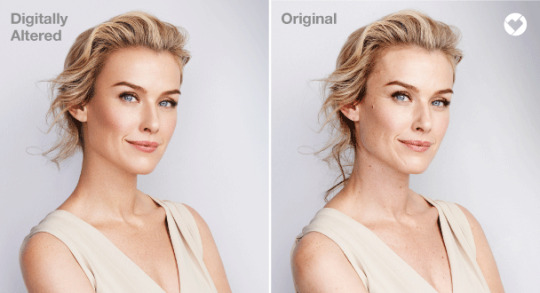
Loose Ends for Monday, January 29, 2018
By Patrick Connelly Project Manager, Twisted Rope
CVS Health this month became the latest among a bevy of brands in recent years to turn its focus to a digital strategy that accentuates natural beauty rather than airbrushed or enhanced models.
"We have a responsibility to think about the messages we send to the customers we reach each day," Helena Foulkes, the executive vice president of CVS Health said in a news release regarding the brand's new direction.
"The connection between the propagation of unrealistic body images and negative health effects, especially in girls and young women, has been established," added Foulkes, who in her role also serves as the president of CVS Pharmacy. "As a purpose-led company, we strive to do our best to assure all of the messages we are sending to our customers reflect our purpose of helping people on their path to better health."
As part of the new strategy, CVS is unveiling what it's calling a "Beauty Mark" that will appear on promotional imagery the brand and its partners use that has not been altered or visually enhanced. By the end of 2020, the brand aims to have all images used in its beauty departments at its CVS Pharmacy stores around North and South America to be compliant to the new strategy.

BRANDING BEAUTY: CVS Health and its subsidiaries like CVS Pharmacy will brand promotional imagery in stores using a "Beauty Mark" when it uses models as they naturally appear.
CVS Health is the parent corporation that operates CVS Pharmacy and other subsidiaries. CVS Pharmacy has more than 9,700 stores and it estimates 76 percent of the U.S. population lives within 5 miles of one of its locations, according to its website.
"We will not digitally alter or change a person’s shape, size, proportion, skin or eye color or enhance or alter lines, wrinkles or other individual characteristics," the company stated in a news release. "We want our beauty aisle to be a place where our customers can always come to feel good, while representing and celebrating the authenticity and diversity of the communities we serve."

NEW DIRECTION: CVS Health announced its plan to showcase imagery that accentuates authenticity and a "body positive" mentality on its website.
The move by CVS comes on the heels most notably of Aerie's "Strong, Beautiful Me" campaign in which the lingerie subsidiary of American Eagle Outfitters shifted to using more authentic-looking women to showcase products, promoting a "body positive" image to its target demographic of 15- to 25-year-old women.
The endeavor paid big dividends for Aerie, building a strong and loyal following of customers via sales and its social media presence with the hashtag "#AerieREAL" on Instagram and Twitter. The announcement by CVS even sparked immediate praise from Aerie. "We couldn’t agree more—REAL is beautiful!," Aerie relayed to CVS in a tweet.
Dream come true!!! Pinch me moment! Thank you @aerie for such a special day. NO RETOUCHING PHOTOS. REAL YOU. EMBRACE YOU. #aeriereal #behindthescenes pic.twitter.com/ZnWgQzTeCF
— Alexandra Raisman (@Aly_Raisman)
December 20, 2017
NATURALLY HIP: Aerie's built a strong and active social media following behind it's hashtag "#AerieREAL" that includes participation from celebrities and athletes like U.S. Olympic gymnast Aly Raisman.
By abandoning digital retouching of images, Aerie also saw sales improve by 32 percent just months after the campaign began.
"We really felt like girls today are just more independent and stronger than ever," Jennifer Foyle, Aerie's president, told Business Insider at the time. "We just knew that it would really resonate with this generation."
In recent years, similar body-positive campaigns have also been launched by Lane Bryant and Unilver's Dove brand.
CVS says two-thirds of women strongly agree the media has set unrealistic expectations for beauty and that 80 percent of women feel worse about themselves after seeing a beauty advertisement.
"I think it's an amazing thing to see the empowerment of women and the fact that we all want to be reflected in a true fashion," Foulkes said. "We want to look at photographs that feel real and authentic."
"In listening to women and our customers we felt like the moment was really right right now where we could have a real impact and do something that is a force for good and for women and for health care in general," she added.
LEARN MORE
Explore these links to learn more about how brands are using "body positive" marketing and diversity as focal points in their digital strategies.
The New York Times examines Aerie's "Strong, Beautiful Me" campaign
Brandchannel discusses Aerie's unique initiative with Jennifer Foyle
From Adweek, the weight-loss industry turns its attention to male celebrity spokespersons
Images courtesy of CVS Health.

Patrick Connelly is a project manager at Twisted Rope. Follow Patrick on Twitter at @thatswhatPCsaid.
#looseends#CVS#Aerie#digitalstrategy#bodypositive#naturalbeauty#socialmedia#Twitter#Instragram#PatrickConnelly
0 notes
Text
3 ways brands are using AR now

By Patrick Connelly Project Manager, Twisted Rope
More and more brands are using augmented reality (AR) to engage with consumers and gain an edge over competitors in aggressive market sectors.
Here's a look at three brands using AR in unique ways to do just that:
1. STUBHUB
StubHub, the online ticket exchange service, has added an AR feature to its iPhone app in time for the Super Bowl that lets its users view a 3-D model of the stadium and its nearby surroundings.
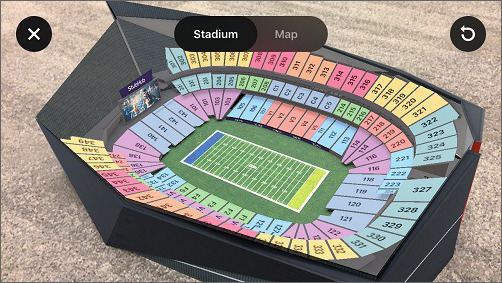
THE FUTURE OF BUYING TICKETS: StubHub's giving consumers a glimpse into the ticket-buying process of the future with Super Bowl LII through its AR-enabled app. (Image source: StubHub)
StubHub's first AR foray will give AR users an opportunity to view tickets for seats they want to purchase for Super Bowl LII, being held at U.S. Bank Stadium in Minneapolis, Minnesota.
U.S. Bank Stadium is the new home of the NFL's Minnesota Vikings. The stadium opened in 2016 and Super Bowl LII is its first high-profile event on the national radar and the first Super Bowl in the city since 1992. The venue will also play host to the 2019 NCAA Division I Men's Basketball Final Four.

TAKE A LOOK AROUND: With the AR feature in its iPhone app, StubHub users can see what's around the Super Bowl LII venue and where they can find adjacent parking. (Image source: StubHub)
StubHub said the AR feature allows consumers more of an opportunity to plan their game-day experience before visiting the stadium, which is particularly useful for out-of-town customers.
"We're solving for real pain points, not just tech for the sake of tech," Matt Swann, StubHub's chief technology officer, told Mashable.
This is the latest move StubHub has made to improve the customer experience in the saturated ticket-exchange market. The company, bought by eBay in 2007, began using a "virtual view" look at seats in 2016 that shows potential ticket-buyers a digital rendering of the view from a specific seat for sale in a venue.

VIRTUAL VIEW: StubHub already provides consumers a digital rendering of seats they may purchase through "virtual view," as seen in this screen capture from its website of tickets available for the NFL's National Football Conference Championship game on Jan. 21 at Lincoln Financial Field in Philadelphia. (Image source: StubHub)
"When you think about adjacencies like parking, concessions, goods, there's all kinds of directions you can go with this," Swann added. "We know it's going to be a core part of the digital experience we're going to continue to invest in."
Swann joined StubHub in 2017 after working with Citi and Amazon. At Amazon, Swann served as global payments chief, leading teams that made buying and selling more accessible for customers that in turn grew Amazon's worth by billions.
2. TIME
Time hit newsstands in January with an innovative new issue that could very well be the change the shifting journalism industry needed. It was even sparked by an unlikely source.
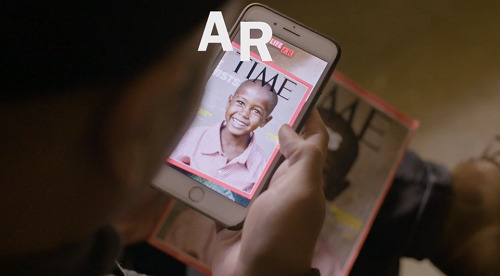
THE TIME IS NOW: Time's January issue comes to life with a variety of AR features. (Image source: Time)
Bono, the lead singer of the rock band U2, was working with Time in 2017 for its then-upcoming "Optimist" issue when he urged the magazine to incorporate some sort of AR or virtual reality component in his story. Time, though, had already been tossing a few ideas around to do just that.

IT'S A BEAUTIFUL DAY: U2 frontman Bono worked with Time magazine on an AR component in its January issue to help his story jump off the page for readers. Watch the video that comes to life on Time's pages. (Image source: Time)
Sports Illustrated, a fellow company under the Time, Inc., umbrella now owned by the media conglomerate Meredith Corporation, first implemented AR in May 2017 in its "Capturing Everest" piece. The article was part of Sport's Illustrated's first AR issue and gave readers a glimpse into the experience of climbing Mount Everest, the world's highest point above sea level.
The immersive media company Ryot Labs assisted Sports Illustrated on the feature and was also contracted to work with Time for its AR foray in the January issue. To mix things up even more, Time also brought in Bill Gates, the Microsoft co-founder and humanitarian, to serve as a guest editor and an idea for a lone AR component in the issue turned into four, Time and its Managing Editor of Life VR Mia Tramz told Adweek.
TIME’s new cover: The Optimists issue, edited by Bill Gates https://t.co/n7kyQVGHlQ pic.twitter.com/lU0eVMGLsr
— TIME (@TIME) January 4, 2018
NEW WINDOWS: Bill Gates guest edited January's issue of Time that featured a heavy dose of AR. Watch the video Gates narrates that jumps off the magazine's page when viewing with the LIfe VR app here.
“Since you’re using your phone for the activation, it’s almost like having Bono and Bill Gates in your hand,” Tramz said.
In addition to January's issue, Tramz and the Life VR team are working to implement more and more AR features into Time articles and those of the other Time, Inc., properties using Apple's ARKIt and Google's ARCore.
“We’ll have integrations with the printed page,” Tramz said. “But I think there’s a lot we can do off the page as well.”

EASY TO USE: A Time reader uses the Life VR app to bring a story to life with AR. Any person with a copy of the January issue and the app can access the enhanced experience of "reading" the magazine. (Image source: Time)
To see Time's pages come to life, download the Life VR app on your mobile device and use the app to check out the articles in the magazine.
Read more about Time's "Optimist" issue here and here. For more on how traditional print journalism outlets are utilizing AR to build their futures, read this article on Adweek.
3. IKEA
Ikea is paving the way for how the furniture, home goods and retail industries can utilize AR.
With the "Ikea Place" app launched last fall, consumers can scan the floor of their apartment or home and select products they want to place in a particular room, getting an idea of how it will look before they buy.

MOVING THE FURNITURE: With the "Ikea Place" app, consumers with devices capable of using Apple's ARKit can preview products in their home or apartment, giving them an enhanced experience before they purchase. (Image source: Ikea)
The app, built with ARKit, allows users to "confidently experience, experiment and share how good design transforms any space, such as a home, office, school or studio," Ikea said in a news release.
"Ikea Place makes it easier to make buying decisions in your own place, to get inspired and try many different products, styles and colors in real-life settings with a swipe of your finger," said Michael Valdsgaard. Ikea's senior vice president of digital development and its leader of digital transformation.
"Augmented reality and virtual reality will be a total game changer for retail in the same way as the internet ... only this time, much faster," Valdsgaard added.

BETTING BIG: The "Ikea Place" app lets users see how furniture looks before they buy. Ikea believes AR will be a "game changer" for the retail and furniture business as more and more brands implement it as a tool. (Image source: Ikea)
Limitations to Ikea Place, though, are that the app, so far, is only available on newer iPhones and Apple devices capable of running ARKit. A full list of compatible devices was compiled by Lifehacker here, along with a guide to some other AR furniture apps for consumers to tinker around with.
***
The number of consumers interested in using AR and VR for practical purposes continues to grow and grow, according to new research from Harris Interactive and Accenture. In a study of 21,000 consumers in 19 countries, 54 to 67 percent of people are interested in using AR to:
Learn more about a place they are visiting.
Learn new skills or techniques.
Visualize how clothes might fit.
View 3-D manuals.
Shop for household items and furniture.
Read more about AR on Twine and learn more about we're doing with AR at Twisted Rope here.

Patrick Connelly is a project manager at Twisted Rope. Follow Patrick on Twitter at @thatswhatPCsaid.
#AR#augmentedreality#StubHub#SuperBowl#USBankStadium#Minnesota#MinnesotaVikings#Time#TimeMagazine#Bono#U2#BillGates#Ikea#IkeaPlace#Apple#iPhone#ARKit#Google#ARCore#journalism#retail#brands#PatrickConnelly
0 notes
Text
Slate’s slick redesign a result of user testing

Loose Ends for Thursday, January 18, 2018
By Patrick Connelly Project Manager, Twisted Rope
The online news magazine Slate this week unveiled a new logo along with a redesign of its website in an effort to help streamline navigation for its thousands of unique daily visitors.
"Our old site hid our navigation tools in a discreet menu that revealed itself only when you clicked on it," Slate Editor-In-Chief Julia Turner wrote regarding the updates in an article on the site detailing the changes.
"Our new design features clear navigation on every page, helping new users figure out what Slate is all about and loyal readers find the stuff they’re looking for," Turner added.
Slate first launched in 1996 and is known for its self-described "left-of-center" views on a wide range of news in current affairs, pop culture, politics and much more.
What's especially interesting in the Slate redesign is how detailed its changes have been self documented by the news outlet, allowing anyone interested in learning more a look behind the curtain at the process involved into why particular updates were made (and even down to the nitty gritty technical specifics).
As Slate's Design Director Jason Santa Maria wrote, the news outlet first began user testing roughly a year ago to see what was resonating best with readers. Slate initially published a single article that strayed from its then-standard display of its regular content management system (CMS) giving "clarity to the text" while experimenting with "new typefaces and colors."
Slate then made tweaks here and there to optimize things before its full-scale launch in January of 2018.
"Slate has been sorely in need of a visual update to bring our look up to the level of our stories, but rather than just focus on a redesign of the website, we wanted to redesign the way we work," Santa Maria wrote.
"We used that initial article design as a sandbox to test assumptions about collaborating together while we also worked out the technical, design and business needs for a new Slate," he added.

LOOKING BACK: Slate's last revamp came in 2013, with its homepage typically looking like the above daily.
Slate's last redesign came in 2013 and it had been using the same CMS since 2011. Since that time, some months it publishes more than 15,000 articles.
"At the time, many sites — including Slate — were focused on attracting new users through social networks and boosting overall audience size," Turner wrote. "Our old design reflected that focus, emphasizing social tools that could spur virality rather than fan favorites like the homepage, which was widely believed to be dead at the time. Since then, our focus has changed."
With a growing membership count in its "Slate Plus" offering, Turner said Slate was able to earn some financial flexibility and a pool of metrics data that allowed her team to see what types of pages readers were spending the most time on along with where they were navigating to and from.
"The new Slate is full of features designed to delight our most engaged users, including a homepage with clearer hierarchy that we hope will make Slate.com an even more compelling and useful oasis on your internet rounds," Turner said.
LEARN MORE
Explore these links to learn more about the redesign process and why user testing and user experience play a crucial role.
Digital Marketer details website redesign tips and why a redesign can be a "risky business"
HubSpot takes a look at some of its customers best redesigns
Forbes examines how important user experience can be through the eyes of CitiBank's 2016 redesign

Patrick Connelly is a project manager at Twisted Rope. Follow Patrick on Twitter at @thatswhatPCsaid.
#looseends#Slate#redesign#newlogo#development#usertesting#userexperience#UX#navigation#CMS#contentmanagementsystem#PatrickConnelly
0 notes
Text
Our Virtual Sandbox: The Interactive Site

A sandbox is a hub for creativity. For children, it's where imagination runs wild. For developers, a sandbox is a virtual space where software can run securely, according to Techopedia. At Twisted Rope, we have our very own virtual sandbox. It's called the Interactive Site and it’s where we experiment with different technology and collaborate to create engaging experiences.
What Is It?
The Interactive Site is a place that gives visitors a behind-the-scenes look inside our office in Buffalo, NY. The view is in 2D and it’s an immersive environment for users to interact with our team and office.
To create this site, we used a 360 camera to record the office and movement of our staff. Then, we found a frame that we liked and animated it to what you see. The view is a panorama style and we also utilized stock footage, which was selectively animated.
Our developers and designers are always refining the site to make it as captivating as possible. Anything that a team member is itching to try out or test is brought to life on the Interactive Site.
Take a Tour
When you enter the site, you're greeted with a welcome message and cheat sheet on how to navigate the space. To move around the office, click and drag to the right or left. When you see something you want to explore, simply click on it.
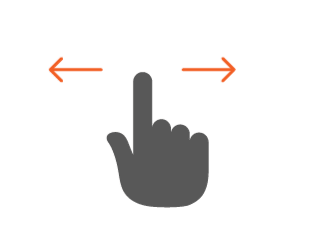
Click and drag left and right to view the entire site

Search for interactive elements and click to explore
There are various interactive icons and elements throughout the office and we want to take you through a couple. For this week, we'll be looking at the far-left side of the site. Be sure to drag or move your mouse over to follow along.

The Clock
Scrolling all the way over to the left, you'll encounter a clock. When you hover over it, the clock expands to show you the time in our Buffalo office. Right now, it’s coded to show only US Eastern Standard Time but we have plans to add additional clocks, reflecting the time of our other offices and locations.
The Window
When you first look at the window, you may not notice anything particularly special about it. However, the weather changes depending on the real weather in Buffalo. Currently, we have five different environments coded:
1. Cloudy

2. Sunny

3. Snowing

4. Raining

5. Thunderstorm

In a future update, we plan to add more options to illustrate the different types of weather experiences.
Poster Above the Printer
You’ll noticed hanging on the blue pillar is a happy hour poster. This is another element we change based on company events, happy hours and holidays. We created various posters for different occasions, like Valentine’s Day, April Fools, New Office Happy Hour, and Halloween Happy Hour.
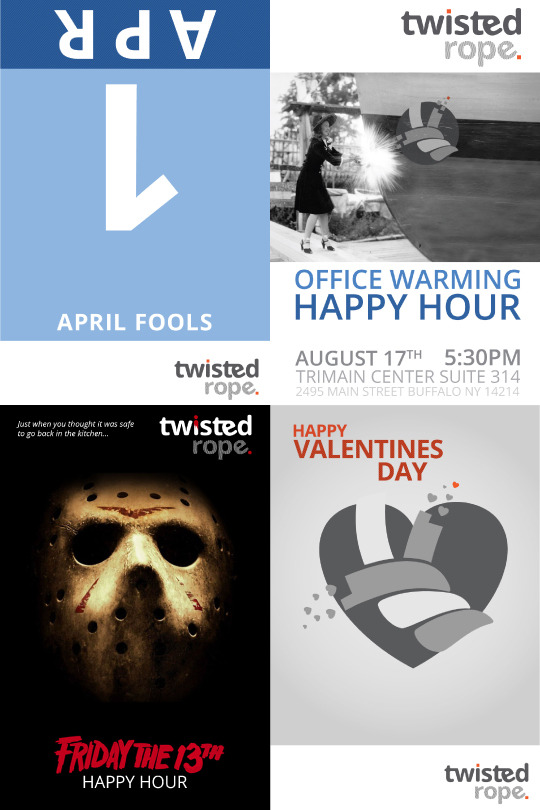
The limited-edition posters are a fun way to update visitors of events happening in the office. Oftentimes, we include a countdown clock until the after-work fun can begin.
Be sure to check the Interactive Site occasionally to see what the latest poster is - it might be gone before you know it.
The Interactive Site is a continuing project that our team of developers and designers work on together. We're excited to add new elements to the site and find new ways to engage with viewers. Stay tuned as we take you through the next section of the office.
1 note
·
View note
Text
The Collection: Lines
Each week, our design team gathers a collection of images that inspires and sparks their creativity. With a new theme every week, they find pictures that excite, intrigue or challenge their artistic viewpoints in some way.
This week’s theme: Lines
German artist Paul Klee said, “a line is a dot that went for a walk.” Depending on how it’s used, a line can be simple and minimalistic or incredibly complex. The relationship between lines to each other piqued our designers’ interest this week. Here’s what inspired them.

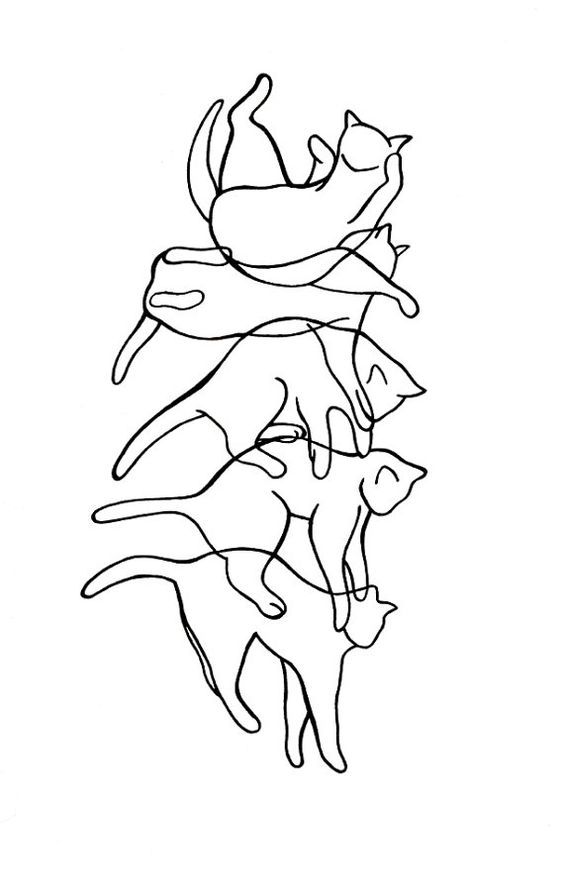











Explore previous “The Collection” posts here
0 notes
Text
A Twisted Collaboration: Recreating the “E.T.” movie poster

Our TR Remix series takes our logo for a creative spin. Here’s a look at how this unique take on the Twisted Rope logo went from an idea to reality.
By Carl Hunley Graphic Designer, Twisted Rope
To spice up the TR Remixes, we decided to pair up a graphic designer with a non-designer to bring other team member’s creative ideas to life. This week, I collaborated with Annette Wong, our digital media strategist. We took Annette’s love of biking and my love of illustration to recreate one of the most famous movie posters - E.T. the Extra-Terrestrial.

via Pinterest
Annette is an avid biker - on an average, summer day, she bikes 12 miles. For this piece, we wanted to do something surrounding her passion. Originally, we were going to edit the Twisted Rope logo inside a bike wheel, like the below examples.

via Pinterest

via Pinterest
However, Annette thought of remixing the logo into an entire scene like the image below, instead of only an up-close shot of a wheel.

via Unsplash
In the end, she searched the Internet for famous bike scenes and when the E.T. movie poster popped up, she decided on that.

via Entertainment Weekly
I wanted to personalize the graphic so I swapped out Elliott and E.T. for Annette and her dog, Hermes. However, she suggested that I should be in the basket since we collaborated on the piece together. To make it accurate, I found a picture of her bike on Instagram to use as a reference. Annette prefers to wear her hair in a ponytail when she’s biking so I added that into the piece, too. Lastly, I wanted us to be flying over the Tri-Main Center, which is where our North American office is headquartered.
To create this graphic, I first drew a draft using Copic black pens and Canson illustration board. Next, I utilized both Adobe Photoshop and Illustrator to digitize the design.


For the most part, the process was fairly simple. I love experimenting in Illustrator so that part didn’t take very long. The most challenging part was getting the lighting right so that the brightness of the moon shone properly on the top of the Tri-Main Center. Originally, I made the image longer so that the moon was higher in the sky but that wouldn’t work for social media so I reworked it to the current design.

I’m very pleased with how this turned out and I can’t wait to collaborate on a future TR Remix with another Twisted team member.
Explore the TR Remix series.

Carl Hunley is a graphic designer at Twisted Rope. Check out his illustrations on Instagram or follow Carl on Twitter.
#TRRemix#TwistedArt#CarlHunley#AdobePhotoshop#AdobeIllustrator#photoshop#illustrator#graphicdesign#graphicdesigner#ET#movies#movieposter
0 notes
Text
The Collection: Basic shapes
Each week, our design team gathers a collection of images that inspires and sparks their creativity. With a new theme every week, they find pictures that excite, intrigue or challenge their artistic viewpoints in some way.
This week’s theme: Squares/Cubes
Basic shapes are sometimes the best start to an idea or concept. Simple and geometric, they act as building blocks for designs. Our designers focused specifically on squares and cubes for their inspiration this week. Check out what they found.
























Explore previous “The Collection” posts here
1 note
·
View note